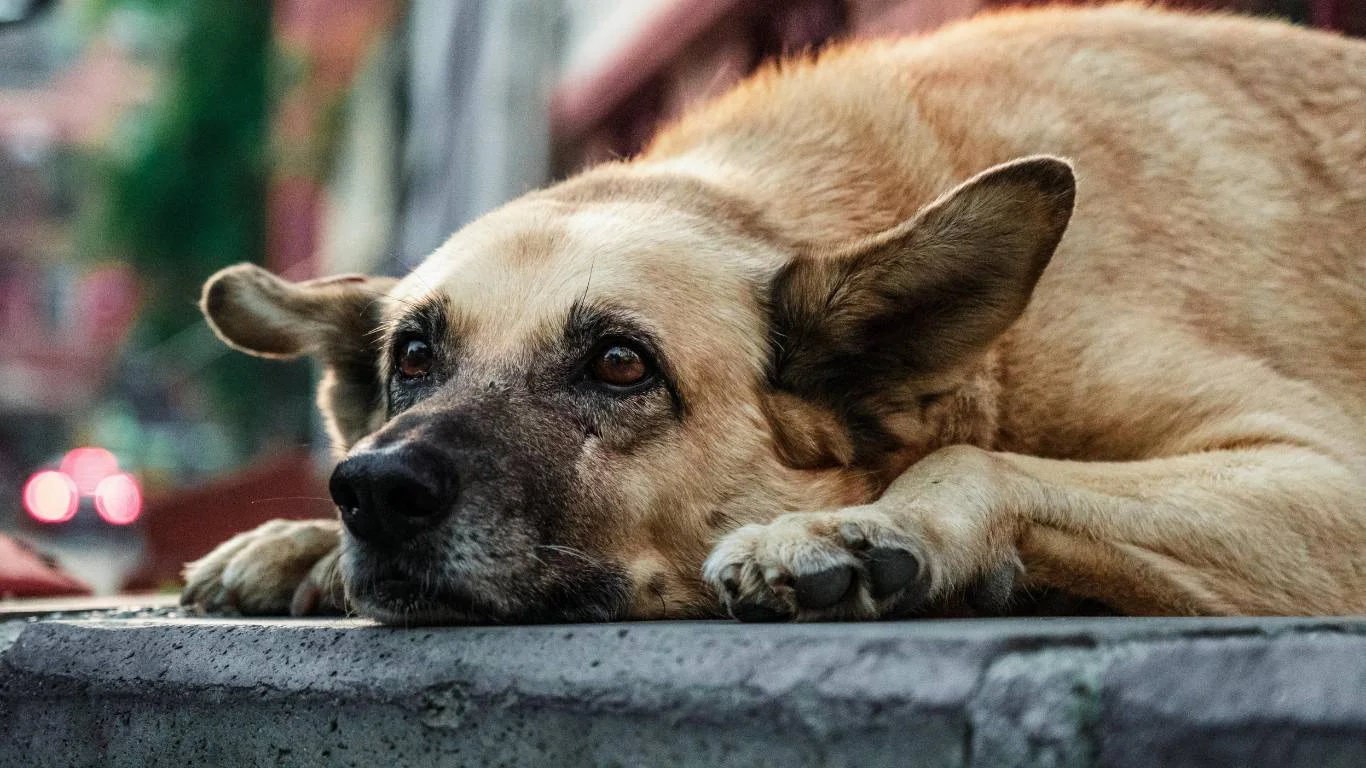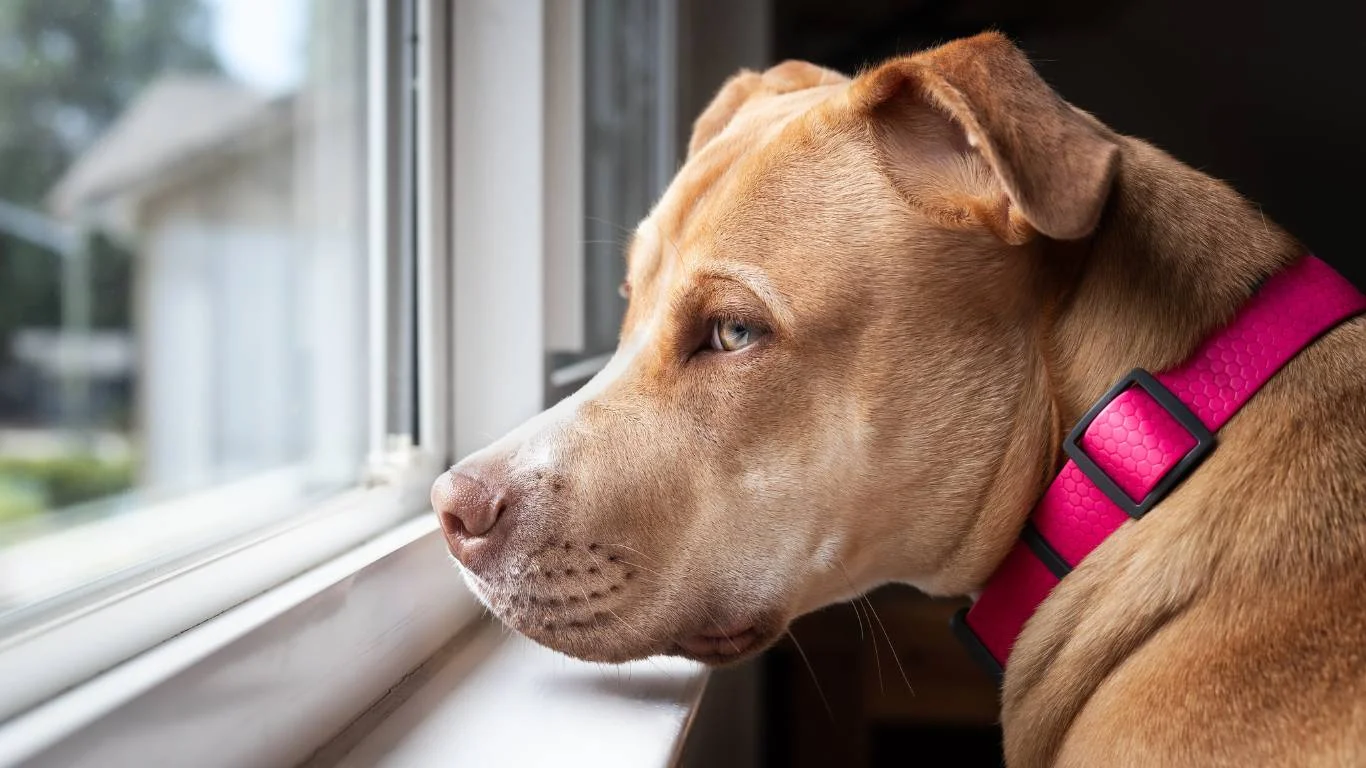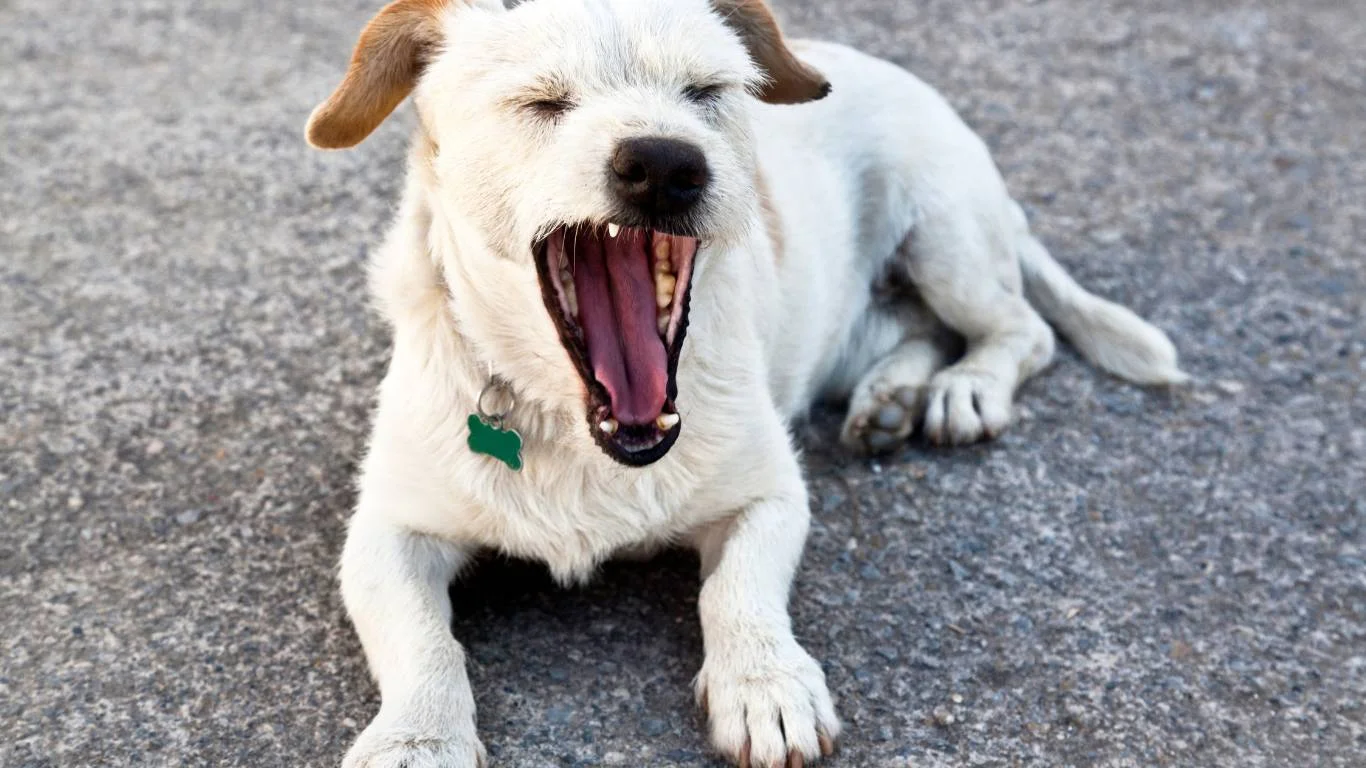How to Effectively Treat a Dog’s Bruised Paw Pad for Quick Relief
As a veterinary assistant with a nutrition-focused background, I’ve seen my fair share of injuries and concerns that pet owners have about their furry friends. One issue that often comes up is when dogs hurt their paws, specifically the bruised paw pads. It can be distressing for both the dog and their owner, and understanding how to treat a dog’s bruised paw pad is essential to making sure your pup gets back on their feet as quickly as possible. In this guide, we’ll dive into the steps you can take to treat your dog’s bruised paw pad, and I’ll share some personal experiences along the way to help you better care for your pet in such situations.
What Causes a Dog’s Paw Pad Bruising?
Bruised paw pads are more common than you might think. When a dog injures its paw, it can often result in a bruise or other types of damage. The paw pads are made of thick, tough tissue to withstand rough surfaces, but that doesn’t mean they are invincible. Sharp objects, rough terrain, hot pavement, and even walking too long on hard surfaces can cause bruising or worse. It’s also possible for the injury to be a result of a traumatic incident, such as an accident or stepping on something sharp.
Common Symptoms of a Bruised Paw Pad
If you’re unsure whether your dog’s paw pad is bruised or just sore, look for these signs:
- Limping: One of the most common signs your dog has injured its paw is limping. The injury may be painful, causing your dog to avoid putting weight on it.
- Swelling: A bruised paw pad can swell, making it tender and more vulnerable to further injury if left untreated.
- Redness or Discoloration: Look for a change in color around the paw pad, ranging from dark red to purple—this is a typical sign of bruising.
- Reluctance to Walk: If your dog is avoiding walking, it’s likely due to pain in the injured paw.
- Whining or Licking: Dogs may whine or lick the injured paw pad in an attempt to soothe the pain.

How to Treat a Dog’s Bruised Paw Pad
Treating a bruised paw pad is fairly straightforward, but it requires attention to detail. Early intervention is key to preventing further damage and ensuring your dog recovers quickly. Let’s go over a step-by-step guide on how to treat a bruised paw pad.
Step 1: Assess the Injury
Before jumping into any treatment, it’s important to assess the severity of the bruise. Is it just a mild discoloration or is the paw pad severely swollen, bleeding, or torn? If your dog is in significant pain, or you see a tear, you should take them to the vet immediately. However, if it looks like a minor bruise, you can usually manage it at home.
Step 2: Clean the Paw
Once you’ve determined that the injury is something you can treat at home, the next step is to gently clean the paw. Use lukewarm water and a mild antiseptic solution to clean away dirt and debris. Avoid using harsh chemicals or soap, as these can irritate the paw pad even more. Gently wipe the paw with a soft cloth or gauze pad, and if necessary, trim away any hair around the paw pad for better access.
Step 3: Apply a Cold Compress
If the bruising is accompanied by swelling, apply a cold compress to reduce inflammation. Use a clean cloth with ice cubes or cold gel packs, and hold it gently against the paw for no more than 15 minutes at a time. This will help bring down the swelling and numb the area, providing some relief for your dog. Be sure not to apply the ice directly to the skin to avoid frostbite.

Step 4: Protect the Paw Pad
After cleaning and cooling the area, you’ll want to protect the paw from further injury. If your dog is willing, consider wrapping the paw in a soft bandage or using a dog boot to shield the bruised area. Be careful not to wrap the paw too tightly, as this can restrict blood flow and cause additional issues. If your dog resists the bandage or boot, try distracting them with a treat or some gentle praise.
Step 5: Monitor for Infection
Even minor paw injuries can become infected, so keep a close eye on the affected area. Look for signs like increased redness, warmth, pus, or a foul odor. If you notice any of these, it’s time to consult your veterinarian. Infections can worsen quickly, so it’s important to act fast if you suspect one.

Step 6: Provide Pain Relief
If your dog seems to be in pain, you can give them dog-safe pain relief medication (as recommended by your vet). Never give your dog human medication, as many over-the-counter pain relievers can be toxic to dogs. In some cases, your vet may recommend a topical ointment or pain-relieving gel that can be applied to the paw pad.
When to Visit the Vet
In most cases, a bruised paw pad can be treated at home, but there are situations where a trip to the vet is necessary. If your dog is showing severe signs of pain, if the bruise doesn’t seem to improve after a few days, or if the injury involves a deep cut or tear, don’t hesitate to seek professional help. Your veterinarian will be able to evaluate the injury and provide the best treatment options for your pet.
Prevention: How to Avoid Bruising in Your Dog’s Paw Pads
As much as we want to fix things when they go wrong, it’s always better to avoid a problem altogether. With paw pad bruises, prevention is key to ensuring your dog doesn’t experience the pain and discomfort that come with these injuries. There are a few simple ways to help protect your dog’s paws from harm and keep them safe from bruising.
1. Regularly Inspect Your Dog’s Paws
It may sound a bit basic, but one of the best ways to prevent paw pad injuries is to regularly inspect your dog’s paws. As a pet parent, we often forget to check the condition of our dog’s paws, especially in between the toes and on the pads themselves. During routine playtime, take a few moments to examine your dog’s feet. Check for any sharp objects, cuts, or irritation. This is something I learned early on in my career when one of my colleagues mentioned how many injuries can be prevented with a quick check every few days.
2. Avoid Hot Pavement or Rough Terrain
During warmer months, it’s easy to forget just how hot pavement can get. Asphalt can burn your dog’s paw pads, especially during the summer. If you ever walk your dog on hot concrete or rough terrain, the friction and heat can cause discomfort and bruising. Stick to early morning or late evening walks when the ground is cooler, and always avoid areas with sharp rocks or gravel. I’ve had several clients ask about walking their dogs on trails, but I’ve always recommended keeping those walks to softer terrain to prevent paw injuries.

3. Consider Paw Protection Products
Another easy solution is to use paw protection products, such as paw balm or protective boots. Paw balms can moisturize and protect your dog’s pads, which helps prevent them from cracking or getting bruised. During winter months, they can also protect against salt and ice, which can cause irritation and damage. On the other hand, protective boots offer a layer of defense from rough or hot surfaces and can be a lifesaver on longer walks. Personally, I’ve seen a noticeable difference in my own dogs’ paw health when I started using a high-quality balm every few days.
4. Keep Nails Trimmed
One of the things pet owners often overlook is the importance of keeping their dog’s nails trimmed. Long nails can affect the way a dog walks, potentially putting extra pressure on the paw pads and increasing the risk of injury. Make sure your dog’s nails are regularly trimmed to ensure they are walking comfortably and with proper paw alignment. This was actually one of the first things I learned when I started as a veterinary assistant—it makes such a huge difference for both their comfort and health.
Signs Your Dog’s Bruised Paw Pad Is Healing
Once you’ve treated your dog’s bruised paw pad, it’s time to monitor how it’s healing. Knowing what to look for can help you determine if your dog is on the road to recovery or if further intervention is needed.
1. Decreased Swelling and Redness
As the bruise starts to heal, you should notice a gradual reduction in swelling and redness. If the paw remains swollen and inflamed for several days after treatment, it could indicate that there is a more serious injury that requires veterinary attention. Swelling should go down within the first 24-48 hours, so if it’s persisting, make sure to give your vet a call.
2. Normal Walking Behavior
Once your dog is walking with little to no limp, it’s a sign that their paw is healing properly. Of course, they might still be a little cautious, but as long as they’re not limping or avoiding using the paw entirely, that’s a great sign. If your dog continues to refuse to walk or seems excessively uncomfortable, it’s time to consult with a professional. From my experience, dogs tend to get back to their playful selves within a few days if the bruise is minor.

3. Paw Pad Texture Returning to Normal
The texture of the paw pad will also give you an indication of how things are progressing. As the bruise heals, the soft tissue should start to return to its usual smooth texture. If the pad remains soft and spongy, or if there are open wounds, it’s best to have a vet take a look. In some cases, deeper tissue damage can lead to slow healing and long-term sensitivity.
4. No Signs of Infection
Finally, keep an eye out for signs of infection. If you notice that the injury becomes warmer, starts to ooze, or develops a foul smell, that’s an indication that something went wrong during the healing process. Infection can complicate a simple bruise, and prompt treatment with antibiotics or other medications will be necessary to prevent further complications.

When to Seek Veterinary Care for a Bruised Paw Pad
While many bruised paw pads can be treated at home, there are some situations where it’s best to seek professional help. If you notice any of the following, don’t hesitate to bring your dog to the vet:
- Severe swelling that doesn’t go down after a few days of care.
- Bleeding that doesn’t stop after applying pressure or a bandage.
- Visible puncture wounds or deep cuts in the paw pad.
- Signs of infection, including pus, foul odor, or increased warmth around the injury.
- Refusal to walk or show any improvement after several days of rest and treatment.
As someone who’s worked in the veterinary field for a while, I can’t stress enough the importance of seeking professional help when in doubt. It’s always better to get a second opinion than to let a minor injury turn into something more serious.
Common Misconceptions About Dog Paw Injuries
As a veterinary assistant, I’ve noticed that many pet owners often misunderstand the nature of paw pad injuries, especially bruises. There are a few myths and misconceptions that can lead to confusion and even improper care. Let’s clear up some of these common misunderstandings so you can take better care of your dog’s paws moving forward.
Myth 1: Bruised Paw Pads Always Heal Quickly
While minor bruises on a dog’s paw pad may heal relatively quickly, this isn’t always the case. Some injuries take time, especially if they involve deeper tissue damage. In my experience, I’ve seen dogs take a little longer to heal depending on their age, activity level, and the severity of the injury. If your dog is still limping after a few days, it might be time to give your vet a call to rule out other issues like fractures or infections.
Myth 2: It’s Safe to Walk Your Dog on Bruised Paws
Another misconception is that you can walk your dog even when they have a bruised paw pad. While it may be tempting to get out and about, walking on an injured paw can actually make things worse. The pressure from walking, combined with potential environmental hazards (like hot pavement or rough terrain), can lead to further injury or even an infection. Trust me, I’ve seen this happen more times than I’d like to admit. Give your dog’s paw time to heal, and stick to leash walks with minimal pressure on the injured foot until they’re fully recovered.
Myth 3: Dog Boots Are Uncomfortable and Unnecessary
When I first started working with dogs, I noticed a lot of people were hesitant to use protective boots for their dogs. There’s a belief that boots are uncomfortable or unnecessary. In reality, dog boots are a fantastic way to protect your dog’s paws, especially if they’re healing from a bruise. They’re designed to be lightweight and breathable, so your dog should be able to wear them comfortably. Whether it’s protecting from hot pavement or keeping dirt and debris out of a wound, boots can make a huge difference in the healing process.
When to Consider Alternative Treatments for Bruised Paw Pads
Sometimes, traditional at-home remedies may not be enough, and you might want to explore alternative treatments for your dog’s bruised paw pad. While it’s always best to consult with your vet first, there are a few alternative treatments that can support the healing process and make your dog more comfortable.
1. Natural Remedies: Aloe Vera and Coconut Oil
If you’re looking for a natural option, you might consider using aloe vera gel or coconut oil to soothe your dog’s injured paw pad. Aloe vera is well-known for its healing properties and can help reduce inflammation and promote skin regeneration. Simply apply a small amount of pure aloe vera gel to the paw pad once or twice a day. Coconut oil, with its anti-inflammatory properties, is also a great option. It helps moisturize dry, cracked paw pads and supports healing. Keep in mind that while these natural remedies can be effective, they should be used alongside conventional treatments for best results.
2. Herbal Supplements
There are several herbal supplements available that are thought to help promote tissue healing and reduce inflammation in dogs. Some of the more popular options include turmeric, omega-3 fatty acids, and green-lipped mussel extract. These supplements can be added to your dog’s food or given in pill form, depending on the specific product. I’ve worked with a number of clients who have had success incorporating these into their dogs’ diets during recovery, but always check with your vet before introducing any new supplement.
3. Laser Therapy
If the injury is more severe, laser therapy might be something to consider. This treatment uses low-level laser light to promote healing by stimulating blood flow and tissue repair. While it’s not commonly available at all veterinary offices, some holistic vets offer this treatment as part of their healing protocols. Laser therapy can be particularly helpful for more stubborn or deep bruising. It’s something I’ve seen work wonders in clinic settings for dogs with long-term pain or healing difficulties.
How Long Does It Take for a Bruised Paw Pad to Heal?
The healing time for a bruised paw pad depends on the severity of the injury and the care given. Generally speaking, minor bruises should start showing improvement within a few days, with noticeable healing within 1-2 weeks. However, deeper bruises, tears, or wounds may take longer to heal. If there are no complications, most bruises will heal within 2-3 weeks. During this time, it’s crucial to keep the injured paw clean and protected. Avoid walking your dog on rough terrain or hot surfaces during the healing process, as this can hinder recovery.
Understanding the Risks of Delayed Treatment
One thing that often gets overlooked is the importance of early treatment. If you leave a bruised paw pad untreated or fail to take action, you could be setting your dog up for complications down the road. Delayed treatment can lead to:
- Infection: Even minor cuts or abrasions on the paw pad can become infected if not properly cleaned and treated.
- Chronic Pain: Leaving a bruise or injury untreated could lead to long-term pain and discomfort for your dog.
- Secondary Injuries: If your dog is walking abnormally to avoid putting pressure on the injured paw, they may end up injuring another part of their body, like their back or joints.
In my experience, dogs who receive early treatment are much less likely to suffer from these complications. Always monitor the injury closely, and if things don’t seem to improve, don’t hesitate to consult your vet.

References
Disclaimer
While I’ve shared my personal experience as a veterinary assistant, the information provided here should not replace professional veterinary advice. Always consult with your veterinarian if your dog’s injury seems serious or if you have any concerns about your pet’s health. Healing times can vary, and your vet will have the best recommendations for your dog’s specific situation.






